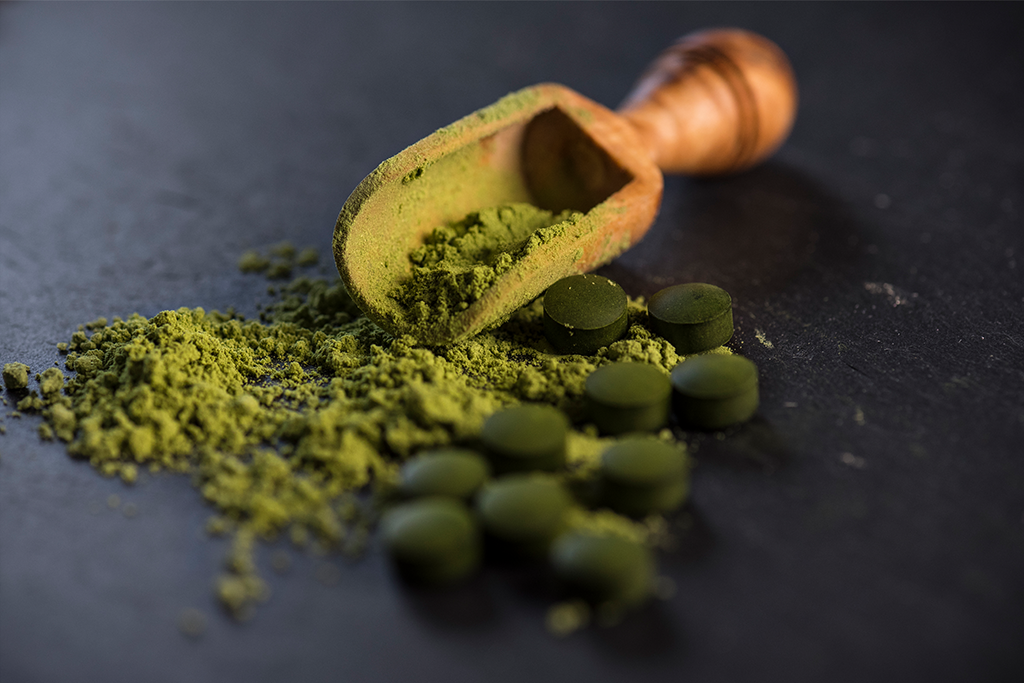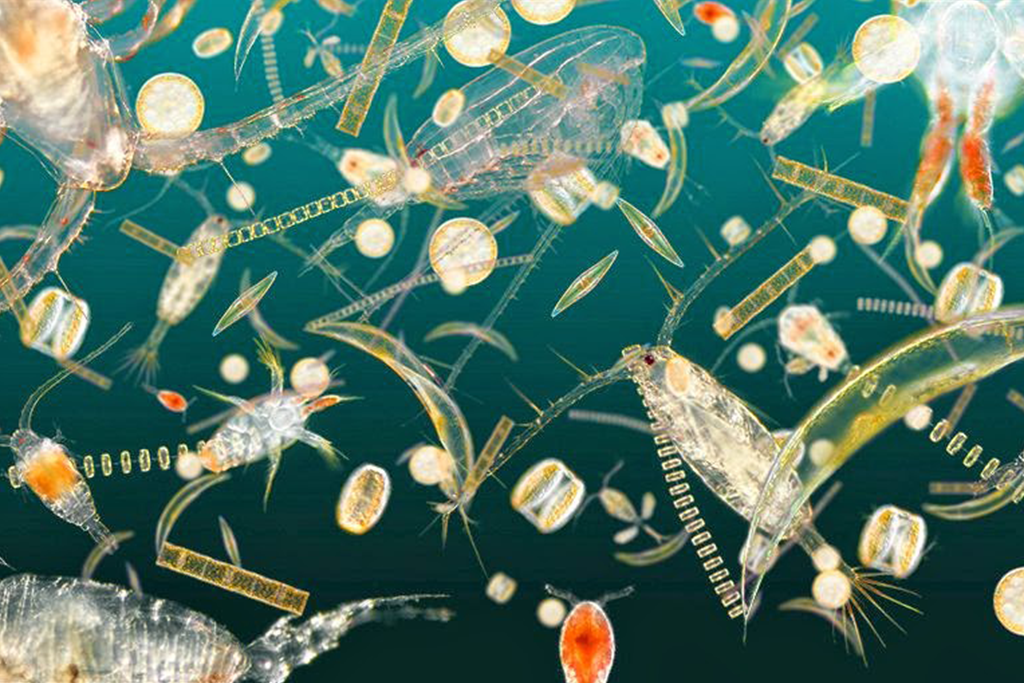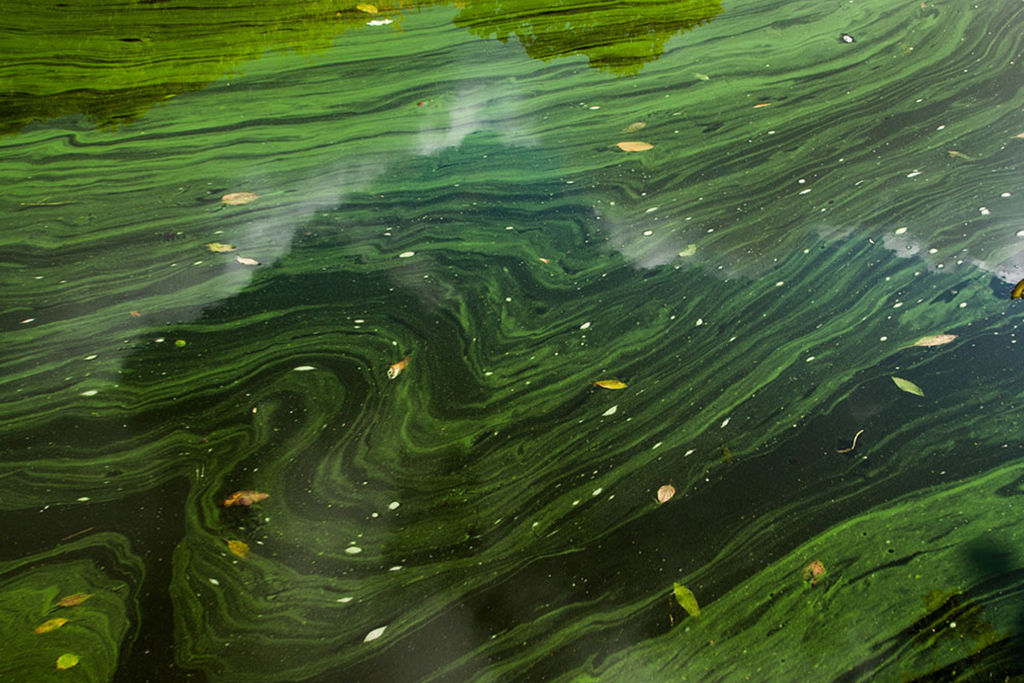ARTICLE
What You Need to Know About Algae, Bacteria, and Your Health

By now, you may have heard of the powerhouses that are spirulina and chlorella. These trendy super-foods are often called “blue-green algae” and used interchangeably in context; however, there are notable key differences between the two that you should know about. For starters, only one of these are actually a type of algae, meanwhile the other is actually a form of bacteria. Can you guess which is which?! Keep reading to find out! Seaweed, giant kelp, and pond moss are all examples of algae — protists with plant-like characteristics, that are capable of performing photosynthesis (the process of using sunlight to synthesize foods from carbon dioxide and water). Unlike terrestrial plants, algae lack vascular tissue and do not possess roots, stems, leaves, or flowers.

Algae notably play an important role in maintaining the oxygen supply on our planet. As primary producers, algae are also the foundation of the food chain in various aquatic environments (including saltwater, freshwater, wet soil, and on moist rocks) that in turn help feed the entire ecosystem. Algae is one of the most nutrient dense, high protein, plant-based, sustainable, safe, and organic foods in the world. It’s been shown to:
- quickly and safely satisfy hunger
- supplement many daily nutritional needs
- improve energy, focus and even athletic performance
- provide natural detoxification and chelation
- improve cardiovascular, neurological, immune, and mental health
- boost longevity and wellness
For all of these reasons, humans have been consuming algae as both food and medicine throughout history. Chlorella is a “true” plant, and is easily the most cultivated algae today since it is widely used as a supplement or a food source. It’s also commonly found in the pharmaceutical and cosmetics industries. There are actually over 30 different species within the Chlorella family, but two types — Chlorella vulgaris and Chlorella pyrenoidosa — are most commonly used in research (1).
In terms of it’s biology, chlorella has a hard cell wall that humans cannot digest. That’s why it must be consumed as a supplement (in capsule, tablet, powder and extract form) in order to reap its health benefits.
- It is a complete protein, meaning that it has all the essential amino acids the body needs in order to produce feel-good neurotransmitters (dopamine, serotonin), and help your muscles grow. To put this into perspective, chlorella algae powder has a higher protein content by weight than almost any other food( 60% protein by mass compared to meat, eggs, and beans, are typically between 20%-40% protein). (2)
- Chlorella has the highest amount of chlorophyll found in any known plant. Chlorophyll, of course, is what makes plants appear green; but more importantly, it acts as an antioxidant that helps detoxify the liver and digestive tract.
- It can be a good source of iron, as well as vitamin C, which also helps you absorb iron.
- It contains Chlorella Growth Factor (CGF), which is a potent phytonutrient comprised of amino acids, beta glucans, nucleic acids, peptides, and polysaccharides. Together, these micro-nutrients work together to help regenerate cells at a faster rate (3).
- It has been shown to help combat oxidative stress damage, which can make signs of aging more apparent.

Cyanobacteria are a type of bacteria that are aquatic and photosynthetic, meaning that they live in water and produce their own food. Their name derives from phycocyanin, the pigment which they use to capture light for photosynthesis. This pigment is typically bluish-green in color (with wavelengths from 450 nm to 660 nm), but reddish-brown variations also exist.
Another fun fact: cyanobacteria are more than 3.5 billion years old and are responsible for creating atmospheric oxygen at the very beginning of life on Earth! The oxygen atmosphere that we depend on was generated by cyanobacteria during the Archaean and Proterozoic Eras. Prior to these time periods, the atmosphere had a very different chemistry that would be unsuitable for life as we know it today. Spirulina is a member of the cyanobacteria family and has a spiral-like appearance (hence the name that derives from the Latin word “helix”, meaning spiral). It is extremely digestible and has antioxidant and anti-inflammatory properties. Spirulina is also rich in vitamins, minerals, carotenoids, and perhaps most importantly for those who are malnourished — protein. In fact, Spirulina consists of 70% protein content, yielding 20 times more protein per unit area than soybeans, 40 times more than corn, and over 200 times more than beef (4).
Unlike most plants, Spirulina is able to withstand extreme temperature variations and still thrive. Spirulina is also an incredibly sustainable food source that, according to the World Health Organization, has the potential to end world hunger and malnutrition. Even NASA and The European Space Agency have begun researching the benefits of incorporating it into astronauts’ diets both in spaceships and on Mars (5). Algae are eukaryotic (typically multi-cellular, but can also be single-celled) organisms that contain a nucleus, mitochondria, and chloroplasts within each cell. They also have a sensor that is similar to the one in the human eye, which helps them detect and identify light sources that they can use to produce energy.
Cyanobacteria are prokaryotic (unicellular) organisms and are the only form of oxygenic photosynthetic bacteria known to date. Unlike algae, cyanobacteria lack a nucleus, mitochondria and chloroplasts; instead they have chlorophylls dispersed throughout their cytoplasm and perform photosynthesis by using water as an electron donor to generate oxygen.
Cyanobacteria are often called “blue-green algae” because they live in water and make their own food, but this name is actually a little misleading because it does not reflect any real relationship between the cyanobacteria and other organisms called algae. Cyanobacteria are not directly related to eukaryotes, but they do share extremely similar characteristics to chloroplasts that are found in eukaryotic algae. (6) Many health professionals consider both forms of cyanobacteria to be wonderfully healthy and effective super-food supplements. When combined, they provide vital amino acids, vitamins, minerals, and healthy fats. More specifically, they:
- Are great sources of protein.
- Are extremely nutrient dense, and therefore have antioxidant effects.
- Can help regulate and improve your mood, cognitive function, as well as the functionality of your nervous system, reproductive system, and immune system.
- Can help lower cholesterol, reduce blood pressure, and prevent heart disease.
- Can help with anti-aging by maintaining the appearance of smoother, hydrated skin.
Though these two super-foods do look, smell and even taste similar, here’s a quick recap of their differences:
- Structure: Chlorella is a true single-cell algae with a nucleus. Spirulina is a multi-celled form of bacteria with no nucleus, and it is much bigger than chlorella in size.
- Color: Chlorella is a green due to chlorophyll; however, there are red and brown variations of algae that exist. Spirulina is a type of cyanobacteria, and is bluish-green in color.
- Where they grow: Spirulina grows naturally in warm, mineral-rich alkaline lakes, rivers, ponds. and saltwater. Chlorella are only found in freshwater.
- Digestibility: Spirulina can be consumed easily because they do not have cellulose in their cell wall, but chlorella needs to be broken down into pill or powder form before the body can consume it and reap health benefits.
- Nutrient Density: Both are high in protein, but spirulina still has a higher protein content (about 60 to 70% of its dry weight.) Both super-foods are also packed with minerals, antioxidants and iron. Chlorella is actually one of the few plant sources of vitamin B-12, as confirmed by a 2002 study. According to the FDA, Spirulina contains significant amounts of calcium, niacin, potassium, magnesium, and iron.
- Detoxification: Chlorella is recognized as one of the most effective detoxifiers of chemicals and heavy metals. It has unique properties in its cell walls that make it bind to heavy metals and other contaminants in the gastrointestinal tract, which prevents them from being absorbed into the body’s tissues. Spirulina conversely does not have a tough cell wall, but has been shown to still aid in eliminating heavy metals and toxins from the body.
ENERGYbits makes plant-based nutrition tablets to support your health and well-being naturally and sustainably. They offer a few different variations of their tablets for different purposes:
- ENERGYbits (100% Spirulina) make for an easy, healthy, high-protein snack before physical activity. They are also ideal for people who do not have access to healthy food while at work.
- RECOVERYbits (100% Chlorella) contain 40 different micronutrients and chlorophyll to help you detox and slow down aging. These tablets are like recovery gold for athletes and people that need to boost their immune system.
- VITALITYbits (50% Spirulina/50% Chlorella) give you the best of both super-foods and are your answer for raw energy and optimized health! With over 40 micronutrients and plenty of protein, VITALITYbits will stop your cravings, improve your focus and give you a steady stream of physical energy throughout the day.
ENERGYbits tablets are organic, keto and vegan! Unlike energy drinks, protein bars, and other sports nutrition products, these tablets use entirely natural products as opposed to sugar and artificial ingredients.
Use coupon code “Biohacked” at checkout to save 20% off of your order! Though generally considered safe, chlorella and spirulina each have their own potential risks and side effects to consider.
Possible side effects of consuming chlorella include:
- Allergic reactions,
- Skin sensitivity to sunlight (photosensitivity)
- Headaches
- Fever
- Sore throat
- Muscle and joint pain
- Oral blisters
- Liver damage
- Diarrhea
- An increase in Vitamin K will likely increase clotting, which may not be ideal if you have a clotting disorder
- Nausea
- Green discoloration of the stools
- Stomach cramps
- Iodine levels are moderate and have negative impacts if you have a thyroid condition
According to the EPA, “Continuous sublethal or low-level exposures to cyanotoxins can potentially lead to the development of gastrointestinal, neurological, and liver disorders.”
Possible side effects of consuming chlorella include:
- Allergic reactions
- Headaches
- Muscle pain
- Sweating
- Insomnia
- Green discoloration of the stools
Disclaimer: We like to help people live healthier, and in doing so, we may provide information about specific health products in order to help the public make educated health decisions for themselves. Please note that we may earn a commission if you click on the links in this article. With that being said, we only promote the products we truly believe in! We appreciate your support of Biohacked and the biohacking community.
- https://journals.plos.org/plosone/article?id=10.1371/journal.pone.0092460
- https://www.consciouslifestylemag.com/chlorella-benefits-health-superfood/
- https://www.bio2gohealth.com/apps/help-center#!what-is-chlorella
- https://www.hunger-undernutrition.org/blog/2011/03/micro-algae-spirulina-the-solution-to-malnutrition.html
- https://www.theguardian.com/sustainable-business/2014/sep/12/spirulina-health-food-panacea-malnutrition
- https://ucmp.berkeley.edu/bacteria/cyanointro.html
